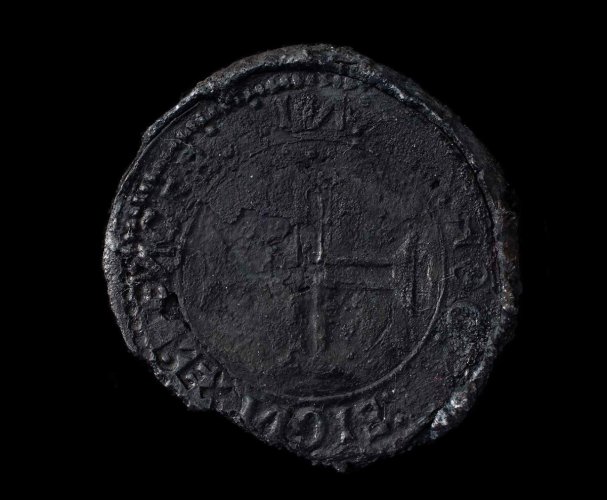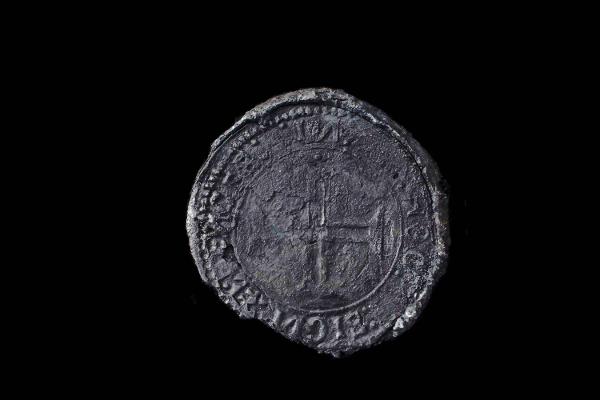On all my travels, my interest is in looking for any Indian connection in the places I visit. Surprisingly enough, I always manage to find it. My recent trip to Oman was no exception. What Indian connection can an Arab country have other than the many Indians who have made Oman their home, you may ask. Therein lies the story.
The wreckage of a Portuguese ship that’s over 500 years old was discovered and excavated off the coast of Oman in 2013. Around 2,800 artefacts were found in the wreck, among which was a silver coin called Indio. This news piqued my interest as the ship in question was Esmeralda, part of Vasco da Gama’s armada to India that had sank off the coast of Oman in 1503, and Indio was the coin believed to have been commissioned by the King of Portugal, Dom Manuel, in 1499, specifically for trade with India. This is the Indian connection I was talking about.
Let’s start from the beginning. We all know Vasco da Gama as the Portuguese explorer who was the first person to sail directly from Europe to India. Born into a noble family around 1460 in Sines, Portugal, he learnt navigation after joining the navy.
Off he goes
His first long assignment was to seize French ships in the Algarve region of the country on King John II’s orders. In 1495, when King Manuel took the reins of Portugal, he was keen on finding a direct trade route to India, and hence appointed da Gama for the same.
Accordingly, on July 8, 1497, da Gama embarked on his expedition to find a sailing route to India. En route, he touched Mozambique and Kenya before dropping the anchor at Calicut on May 20, 1498, where the Muslim traders were not welcoming. Finally, in August, he and his crew began their homeward journey and reached Portugal on July 10, 1499 to a hero’s welcome.
Buoyed by this successful voyage, Portugal, in an effort to monopolise the trade route to India, despatched Pedro Álvares Cabral with a team of vessels to India.
Cabral managed to establish the first Portuguese trading post in India after fierce fighting with Muslim traders who offered stiff resistance.
In order to further secure Portugal’s dominance in the region, King Manuel asked Vasco da Gama to repeat his journey to India. So, in 1502, da Gama embarked on his second expedition to India, equipped with an armada of 20 ships, the largest Carreira da India fleet to date. His mission was to acquire spices, and destroy the Muslim shipping industry that had monopolised the spice trade.
Esmeralda was a part of the fleet, and it was helmed by da Gama’s maternal uncle Vicente Sodre, who was instructed by King Manuel to assume the role of captain-major should anything happen to da Gama. After da Gama’s return to Lisbon, Vicente Sodre was asked to protect Portuguese interests in the Indian coast, as also their allies in Cochin and Cannanore from possible Zamorin attacks. But, Vicente Sodre had other plans. He chose to sail towards the Gulf of Aden in search of rich Arab trading ships with their stock of pepper, cloves, sugar, textiles and rice to take home as prizes.
Along with his brother Brás Sodré, who helmed another ship named São Pedro, Vicente unleashed terror by plundering the vessels owned by Muslims, killing the crew and setting the ships afire.
However, in April 1503, though the locals warned the brothers of an impending storm, they chose to ignore it, with the result that Esmeralda sank in the northern coast of Al Hallaniyah, the largest of the Kuriya Muriya Islands, situated approximately 45 km off the southern coast of Oman. Cut to the present. In the year 1998, nearly 500 years after the ship’s sinking, divers discovered the possible wreck site on the island of Al Hallaniyah. And, in 2013, the shipwreck was discovered in the shallow waters of the Ghubbat ar Rahib Bay, which lay off the north-eastern coast of the island.
It was subsequently recovered and explored by a team led by David Mearns of Blue Water Recoveries, a British company that specialises in the recovery of sunken shipwrecks, ably supported by the Oman Ministry of Heritage and Culture.
And, in the archaeological excavations, about 2,800 artefacts were recovered including ceramics, navigation equipments, shot made of stone, trade goods, gold and silver coins, a fractured ship’s bell, and an astrolabe. Of the coins recovered was Indio.
I hadn’t realised the importance of the coin till I visited the Omani National Museum, where the archaeologist Ahlam Al Hosni said, “This is a great discovery. It is one of the oldest shipwrecks in known history. The Indio coin we have found is the rarest of the rare.”
It wasn’t an exaggeration as there are only two coins of this mintage. While one coin is in the National Historical Museum of Brazil, the other one, recovered from Esmeralda, is in the National Museum of Oman.
This coin is also known as the ‘lost’ or ‘ghost’ coin of King Manuel as it has always been rare owing to its limited mintage, for less than five years, when it was discontinued in favour of the tostao.
In detail

Image : Deccan Herald
Details on the coin clearly state that it was minted for the sole purpose of trading with India. While on one side of the coin is the cross of the Military Order of Christ encircled by the Latin words ‘IИ HOC SIGИO VIИCES (in this sign you will conquer), on the other is the royal coat of arms encircled by the abbreviated form of ‘PRIMUS EMANUEL REX PORTUGALIAE ALGARVE CITRA ULTRA IN AFRICA DOMINUS GUINEE, IN COMMERCII, NAVIGATIONE AETHIOPIAE, ARABIAE, PERSIAE INDIA’ (Manuel I, King of Portugal and Algarve and overseas of Africa and Guinea, and through commerce and navigation of Ethiopia, Arabia, Persia and India).
Both Indio and the bell are on display at the National Museum in Oman. A true treat to history lovers, and a reminder of our country’s importance in the spice trade of yore.
Source: DH
Image Courtesy: DH
You may also like
-
India Can’t Afford to Remain Stagnant at this Juncture, Says PM Modi; Asks People to Buy Locally-Made Goods
-
Stolen Artefacts to be Returned to India from Scotland Museums
-
Netaji’s Hologram Statue at India Gate
-
10th Century Stone Idol of Goat Head Yogini IllegallyRemoved from A Temple in Lokhari, Banda, UP Being Returned to India
-
UNESCO Inscribes ‘Durga Puja in Kolkata’ on the Representative List of Intangible Cultural Heritage of Humanity
